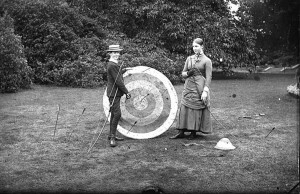If you’re new to the world of copywriting, trying to pin down what the word means, and understanding how it can attract more customers and make more sales can be a pretty abstract concept.
So, in our journey to de-confuse the subject here is your first rule:
Copywriting is persuasive writing.
It is very different to just regular “writing.”
Rather than simply give the reader information, it has to persuade an audience to think a certain way, feel something and / or take action.
There are also plenty of copywriting rules and techniques to make content compelling enough to produce this desired result.
For example, compare this:
There will be a “how to start blogging for business” workshop Saturday 14th July from 2-3pm.You’ll learn how to set up a WordPress account and write your first blog post by the end of the day.
And this:
If you want to attract more customers by writing a compelling blog for your business then keep Saturday the 14th of July free for our “How to Start Blogging for Business” workshop. Even if you’re a complete technophobe, we’ll walk you through and have your first blog post live and attracting an audience by the end of the day.
Notice a difference?
The first example simply tells you what is happening. It “informs” you about the event. However, the second example has been written to appeal to an audience interested in blogging for their business.
Instead of just informing, it is “persuading” the right person to attend the event.
“Writing informs and copywriting persuades”. Click to Tweet
The important thing to understand is that the difference between the 2 pieces of writing is created by very deliberate and conscious changes rather than a personal preference to how they read.
Okay, so far we know that copywriting is about being persuasive!
In addition to that, there are 3 other rules that copywriting needs to follow to be separated from just regular writing.
Those 3 Rules of Copywriting Are:
- It needs to promote a specific subject
- It needs to target a specific audience
- It needs to have a specific (and ideally measurable) goal
There are other elements that exist within copywriting.
You might have heard about benefits, headlines, calls to action, social proof and other copywriting terms, but those are the tools to get the job done and you won’t find all of them in every piece of copywriting, but every piece of copy should follow those 3 rules above.
So for now, let’s focus on the basic rules:
One: It Needs to Promote a Specific Subject

Every piece of copy (the product of copywriting is often shortened to “copy”), will be focused on promoting a specific subject. This might be a product, or a business, or it might even be an idea or argument.
It is not the same a writing a journal, where your thoughts can meander through many different subjects without really highlighting one.
When you’re copywriting, you need to have a clear focus of the subject you’re covering which may be:
- A new product or service
- An event
- Your newsletter (to encourage sign ups)
When you really zero in on a specific subject or topic you write stronger, more focused copy, and that brings us to the very important reason behind rule number 2:
Two: It Needs to Target a Specific Audience

Copywriting isn’t about promoting a subject to anyone who will listen. The more you can focus your message to a smaller, specific audience the more effective your copy will be.
For example, let’s say you’re writing a leaflet to promote a blogging course.
Blogging is a pretty wide subject and without a specific audience you’re going to struggle to write compelling copy.
Is your audience for people who want to blog? Or for people who should be blogging but don’t know why it’s important? Is it for advanced bloggers, or complete beginners? Is it for people who want to blog professionally, blog for their business or just blog for fun?
Unless you pin down your audience, instead of appealing to everyone, you appeal to no-one.
Advanced bloggers will get put off assuming it’s a basic course, beginners might feel it’s too advanced, so if you simply write:
“Blogging course starts this Saturday”.
No-one feels it’s catered to them.
However, if you define a targeted audience, for example a business blogging audience, your copy becomes easier to write and more interesting to read.
With a clearer picture in your mind of who it is you’re trying to reach, you can ask yourself:
- What do I know about my customer?
- What is my customer interested in?
- What does she want from the product?
And from there you can start weaving those things into your copy.
If we were trying to attract small business owners with our blogging course, what do we know about them?
- She wants to attract more customers
- She’s probably on a small budget for marketing
- She probably doesn’t have a huge amount of spare time considering all the other things they’re trying to get done in their business.
Just knowing these few details, lets you write copy which is more interesting to this specific group. For example:
“Blogging for your business makes your website easier to find, attracts more customers, doesn’t require a big budget and can be done in as little as 15 minutes a day…”
See how the copy has been changed to include the elements of interest to the customer?
This is just a simple example, but it is important to remember that copywriting has to reach a specific audience.
Finally, the most important rule is that each piece of copywriting should have:
Three: It Needs to Have a Specific (and Ideally Measurable) Goal

In the above examples, our goal was to have people attend our blogging course. However, it might be that the goal for your copywriting is:
- Have prospects call you
- Get customer to hire you
- Get readers to sign up to your newsletter, or share a blog post.
The goal is the whole purpose of writing the copy in the first place. If you don’t have anything you want your reader to do, there’s no point in copywriting.
Have you heard of the term: “call to action”?
It’s a tool that copywriters use to encourage their reader to take an action which helps them achieve their goal.
For example, if your goal is more sales for your business, your call to action in a brochure may be to complete an order form, request a free trial or phone a number to talk to a sales representative.
If you’re trying to build an online audience, then your call to action might be to have your reader share content that you’ve written, sign up to a newsletter, or mention you in social media.
Now, I’ve said that ideally, your goal should be measurable. The reason I include this is because a lot of copywriting is used in advertising to achieve goals with no way of knowing whether or not the copywriting was successful.
It’s why John Wannamaker was popularly quoted as saying:
“Half the money I spend on advertising is wasted; the trouble is, I don’t know which half”
Most adverts you see around you, whether on billboards, or in magazines, don’t have calls to action and can’t be measured to see if the business is moving closer to its goals.
Big businesses are often happy to do this to just get the brand name out there. The copy would still be classed as copywriting because it has a goal which is to “build the brand,” but without a specific number to call, or coupon to redeem, it’s difficult to measure the results and know if the copywriting worked.
If you’re a smaller business, every single penny and second invested in marketing and advertising should be measurable. Online there are plenty of tools which can tell you sometimes instantly whether or not your marketing is working.
Common online measurable goals include visits to a web page, the time spent on your website, how many sales were made from a sales page, how many newsletter subscribers did you get etc.
When Do Businesses Use Copywriting?
Okay, hopefully the concept of copywriting is a little clearer, so to wrap things up for this article, here are a few examples of where you will find copywriting being used to build businesses:
- Business adverts
- Web copy
- Leaflets and brochures
- Email marketing
- White papers
- eBooks
- Free reports
- Sales pages
We look at some of these in the next article of the “What The Heck IS Copywriting?” Guide
[signup-form id=”9948″]